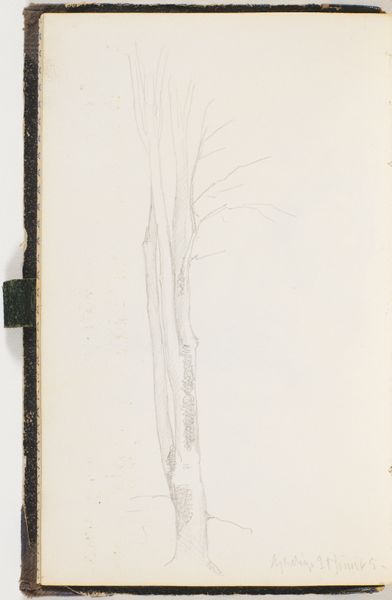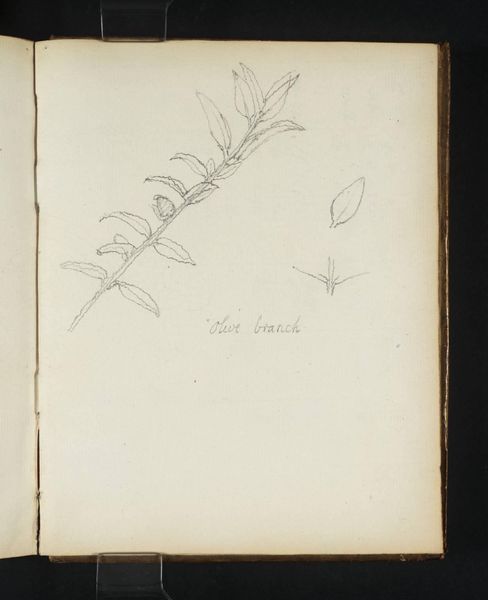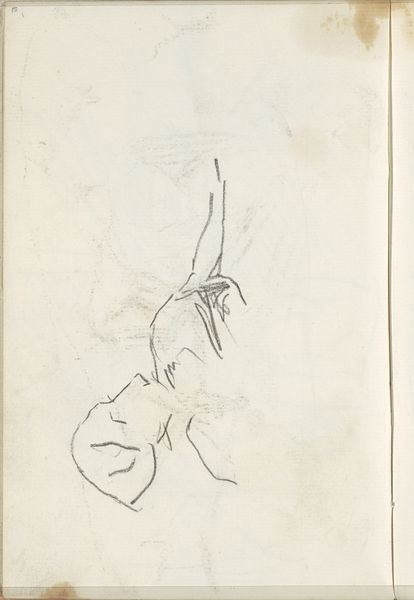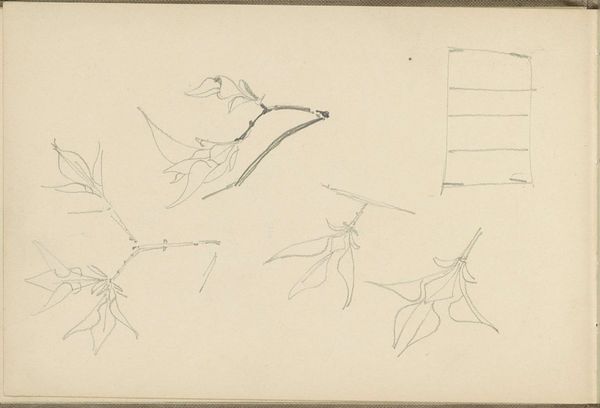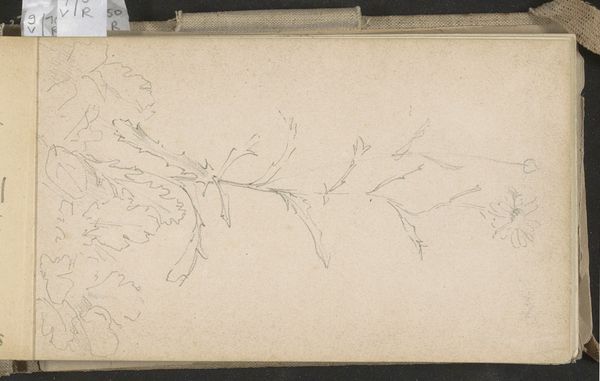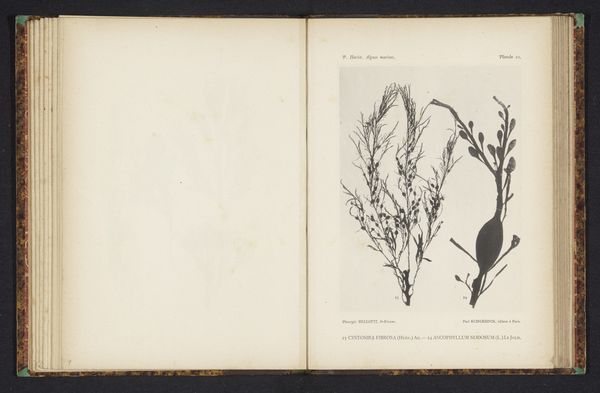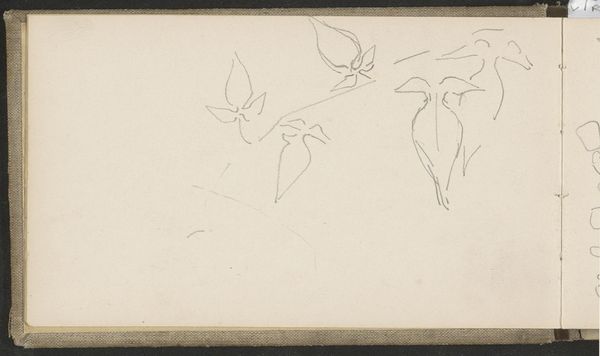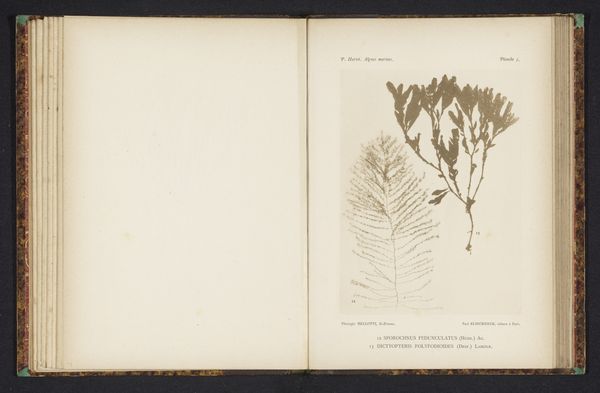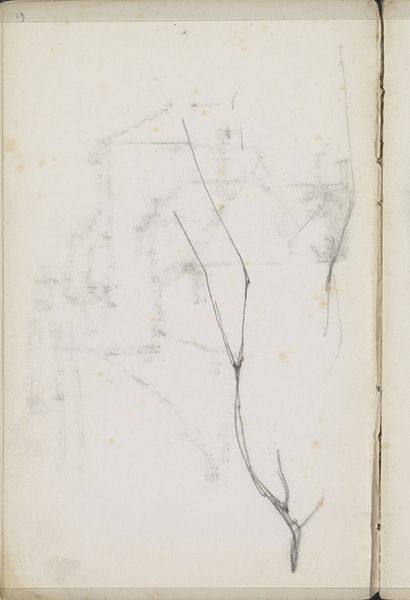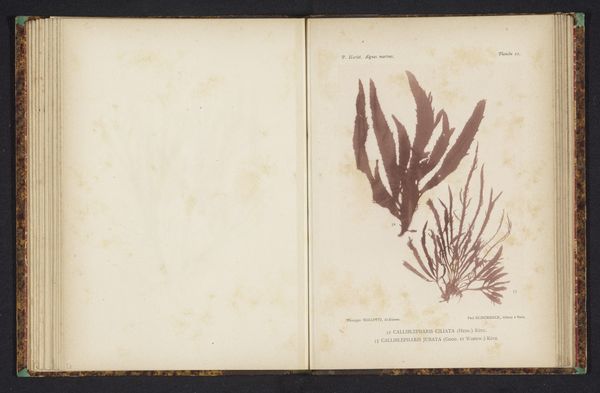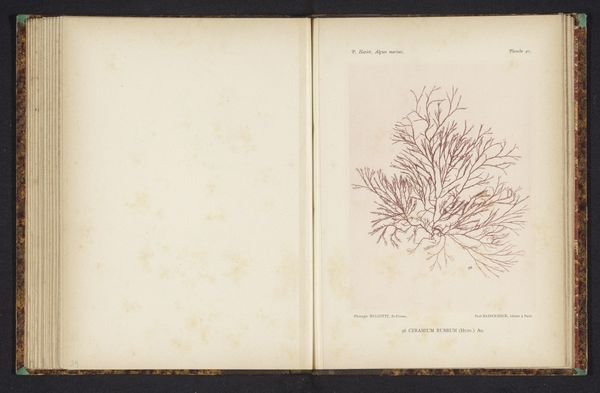
drawing, paper, pencil
#
drawing
#
organic
#
pen sketch
#
sketch book
#
incomplete sketchy
#
hand drawn type
#
landscape
#
paper
#
personal sketchbook
#
hand-drawn typeface
#
ink drawing experimentation
#
pen-ink sketch
#
pencil
#
line
#
sketchbook drawing
#
sketchbook art
#
modernism
Copyright: Rijks Museum: Open Domain
Curator: Welcome. Before us is "Plantmotief," a drawing by Carel Adolph Lion Cachet, likely created between 1874 and 1945. It's a sketch done with pencil and ink on paper. Editor: My first impression is one of delicate symmetry. The composition is stark, almost ethereal. The limited tonal range gives it a dreamlike quality. Curator: Indeed. It's part of a larger sketchbook, and what we see is the raw experimentation. Cachet seems to be exploring organic forms and hand-drawn type, merging observation with a Modernist line style. Editor: Focusing on the lines, there is something fascinating about how he's managed to evoke depth with such economy. Each stroke seems purposeful. What do we know of the sketchbook's intended audience or context? Curator: That’s difficult to ascertain definitively, but considering the nature of sketchbooks, it may have served as a reference library, a tool in Cachet’s practice. Cachet had strong links to the decorative arts, working with textiles, graphic design, furniture design, and bookbinding, as well as being active as a painter and etcher. Editor: So this isn't merely an exercise in botanical accuracy but a study of form for potential application in other design work, reflecting the labour and skill needed to extract design ideas from simple observation? Curator: Precisely. Considering Cachet's involvement in applied arts, the 'Plantmotief' drawing provides access to his artistic process. He probably uses his plant study for potential mass productions with an awareness of the market he provides materials for. It would fit neatly with ideas from the Modern Arts and Crafts movement as well. Editor: Fascinating. Looking at the work in the context of his varied output reframes how we perceive it. I still appreciate its stark beauty and pure, minimalist composition, however, considering that Cachet may have adapted it to printing patterns or wallpaper gives the sketch an innovative dynamic of both labour and aesthetic form. Curator: Indeed. I think this work provides an accessible snapshot into the artistic process during the era of modernism. Editor: I'm left contemplating the fusion of utility and beauty, of design concept and potential outcome, it’s surprisingly captivating for a quick sketch!
Comments
No comments
Be the first to comment and join the conversation on the ultimate creative platform.
